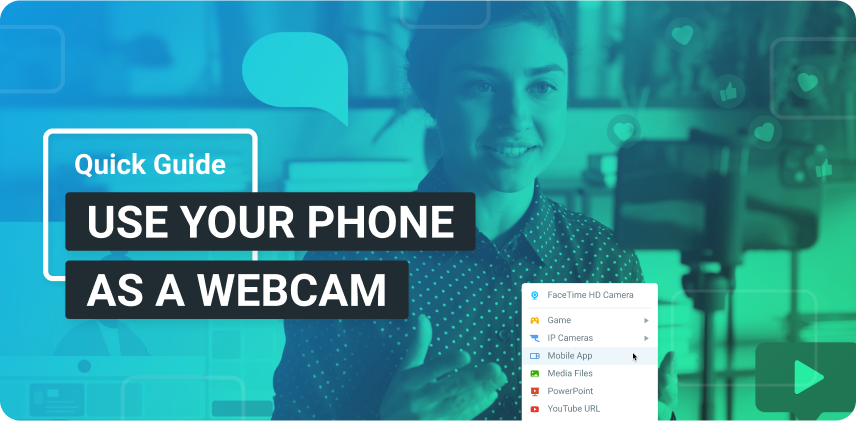Online teachers need to work with all the technical aspects of e-learning while still delivering great content to their students. It’s hard work! But, also rewarding. It’s a great moment when your student learns a new word or a new skill, isn’t it? To make sure you get that feeling more often, we’ve put together 16 online teaching tips to prepare and deliver lessons. These online teaching tips are here to help you be the best online teacher you can. And there are more tips to come!
Technical Online Teaching Tips
One of the biggest differences between teaching in a regular class and an online class is the technology involved. Online teaching requires dealing with computers, webcams, software, hardware, platforms and so on.
TIP #1 Learn about your E-learning Platform
E-learning has its own world of tools and platforms all with the goal of helping the teacher, the student, and the institution. Since each online school, institution and company have their own platform, we’re not going into specifics of each platform. The important tip here, regardless the tools you have to work with, is to learn everything you can about them.
TIP #2 Teach students to use the E-learning platform
Many times, students don’t make the most out of their online courses, because they don’t know how to use the platform. Your students’ success is your success. So, make sure they have the resources they need to learn about the platform and encourage them to use it.
TIP #3 Find technology that helps you – Apps & Services
There’s always an app for everything, right? Although, there possibly are too many apps out there and some might just get in your way. Find the ones that help you work smarter.
For example, if you send out emails to your students, get an email automation tool that can do it for you, like MailChimp, Get Response or any of the other hundreds out there. Or, if you always have to do repetitive tasks on different apps, maybe a tool like IFTTT (If This Then That) can help. They have thousands of combinations that allow your apps and devices to work together. An example is setting it up to create a calendar event when you make a note on a different document.
You can find many apps for all different needs out there and try them out to make sure they are working FOR you.
TIP #4 Find technology that helps – Software
Having a live video software can expand your possibilities when teaching online and help you be more productive. ManyCam, for example, allows you to add all kinds of effects, multiple video, and audio sources, playlists etc. You can also easily share your entire screen or custom areas of it and with the hotkeys, you can quickly control ManyCam during your online class.
It’s important to have a software for live video because it gives you freedom. It allows you to deliver creative online lessons, which helps your students to learn more efficiently.
Equipment & Resources
TIP #5 Get the right Equipment
Talking about equipment always gets people scared. But, don’t panic, equipment doesn’t have to be expensive. It’s possible to find good quality within a low budget. If you are an online teacher, working for a school or institute, make sure you follow their requirements when it comes to the necessary equipment.
Nowadays, some mobile phones can be part of your equipment, due to their high-quality cameras. More importantly, make sure you get a good microphone, so you don’t have any issues with audio.
TIP #6 Test your Equipment
Regardless of what equipment you have, old or new, always test it. Sometimes, we trust technology too much and we don’t realize that things break. Create an equipment list and keep it updated with the performance, testing them often.
TIP #7 Backups & Contingency Plans
But, even if you test everything and make sure they’re working, keep in mind that things break, at any time and for no reason. So, keep a backup ready at all times. Remember to test the backup, too. And yes, backups can break too, but we need to draw the line somewhere.
It’s important to have a contingency plan, which in this case means, having a plan of action for when something does go wrong. For example, if everything goes wrong, have an email ready to send to your students, with a new schedule or a recorded video to make up for it.
TIP #8 Create variety (videos, images, PDFs, texts etc)
Offer your students variety. People are different types of learners, so, having this variety will ensure your students get the same opportunities to learn. Apart from the live classes, try giving your students recorded videos or images that help you explain something. You can also create workbooks in a PDF format, slide decks etc.
To create images, you can use the web-based app called Canva. It’s free and easy to use. On ManyCam, you can add your own objects and effects, which allows you to personalize your class. As for the workbooks and slide decks, you can create them with the Microsoft Office suite. You can get great templates at Hubspot.
Online teaching tips for delivering content
Once you’ve learned and prepared all you could on the technical side of e-learning, you need to prepare for delivering the content. Whether you teach kids, adults, ESL, K-12, or any type of online course, there are common denominators among all great online teachers.
TIP #9 Have a clear outline of the course
When you have a clear outline of the entire course you are offering, it will be easier for you to create each class. You can share it with students or their parents to set the right expectations. Keep some things up your sleeve, to make sure you over deliver and exceed all expectations. This will play a huge role in your success as an online teacher, where reviews and feedback are so important.
TIP #10 Have a clear outline of each class
After creating an outline of your course, you should create one for each class. These outlines will help you stay on track and keep everything organized. Also, it gives you a good introduction to each class. It can help keep your students engaged until the end when the last thing on your outline caught their eyes.
TIP #11 Create live content consistently to increase engagement
Apart from the classes, you can offer additional live content on a consistent basis. For example, a Q&A (questions and answers) just for students every Friday at 6 pm. It’s a way to increase your students’ engagement with you and your course.
TIP #12 Make sure they are keeping up with the course
You need to encourage students to keep up with the course, even though it’s for their own interest. Incentives, deadlines and due dates can help. For example, the first 10 students that watch a lesson get something extra. Or if it’s a one-on-one video call, offer incentives when they bring some good news related to the course
Establishing patterns, deadlines and due dates can push students to keep up with each lesson. You can use a calendar like Google calendar and get students to set reminders of their homework and projects.
“The many advantages of “anytime, anyplace” education can also present challenges for both learner and instructor in time management and operation. Establishing and maintaining a predictable pattern of course studies can serve the learner by providing a foundation for planning other life activities.” – Dr. Lawrence C. Ragan, Director of Instructional Design and Development for Penn State’s World Campus
TIP #13 Plan different activities to keep students focused
Varying the activities in class will help you keep your students engaged with your content and can help them learn better. We’ve seen teachers coming up with fun games, with objects and effects on ManyCam to encourage their students’ participation. You can also create competitions with giveaways and prizes to motivate them.
TIP #14 Prepare extra resources they are not expecting
Always have some surprises up your sleeves. Whether that is an extra video with additional content, a PDF or gift cards, it’s up to you. Make sure you are constantly exceeding your students’ expectations because that will lead to recommendations and later on, more students.
TIP #15 Create a connection with your students
To connect with your students, share your own success AND failure stories. It allows them to identify with you and encourages them to keep going, even if it’s hard. It’s a great motivation to know that your teacher also went through some of the challenges you’re facing. So, let them know they are not alone.
TIP #16 What’s the lessons’ takeaway?
In every video and every lesson in general, make sure you have one clear takeaway. In other words, from everything you talked about in a lesson, what is one thing that students should take away, above all else? At the end of the lesson, make that point clear and your students will always learn something.
Before you start your online classes, check out ManyCam for Education and learn how it can help you:
In Summary – Takeaway
And after all the 16 online teaching tips we laid out here, what should your takeaway be? The importance of preparation. Preparation is key to be a great online teacher. Preparing for each lesson will help them flow better, improve your performance and set the right expectations. When you put these online teaching tips in action, you’ll feel more at ease before each class because you’ll know that you’ve done everything you could to give your students a great lesson.
What are your tips online teaching tips? Let us know in the comment section below.
Here are other blog posts that might be interesting for you:
8 Tips to Become a Successful Online Teacher
As the online teaching jobs keep popping up everywhere, the community of online teachers keeps growing. Nonetheless, to be a successful online teacher, you need more than a job title. An online teacher needs to connect with the students, get them engaged and deliver content… (Continue reading)
Increase Audience Engagement on Live Videos with Drawing Tools
Surrounded by distractions, your audience might find it hard to focus on your content. To make sure your message gets across, you need to use every tool in the toolbox to increase audience attention… (Continue reading)






